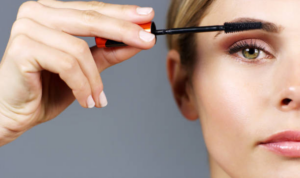Venturing into the world of self-barbering can be an exhilarating yet intimidating process, especially when it comes down to using tools not traditionally meant for hair-cutting, such as shaving razors. At first glance, it might seem unconventional, but shaving razors, particularly straight razors, have been used by skilled barbers to give some of the closest shaves and neatest haircuts for centuries. In this article, we will explore the intricacies of using a shaving razor to cut your hair—a task that, with the right approach, can lead to results that rival professional trims. Whether its managing the longest hair or doing touch-ups, the razor technique could also offer a more personalized haircut experience, as you steadily grow adept at managing your hair growth through precise cuts.
Tools and Preparation
Before you embark on your hair-cutting journey, the importance of choosing the right type of razor cannot be overstated. While safety razors can offer more protection against cuts, they are often not the best for cutting hair due to limited flexibility. Straight razors provided by trusted brands offer more control and can help in achieving the smoothest shave and precise haircuts. The straight razor’s sharp edge allows for detailed work and can deliver the closest shaves with proper technique.
Preparing your hair for the cut is just as crucial as selecting the appropriate razor. Your hair should be clean and damp, but not excessively wet, as this can make it more susceptible to razor burns. Using shaving creams is a good strategy to not only soften the hair but also to provide a thin layer of lubrication that allows the razor to glide more easily across the scalp, reducing the risk of irritation.

Setting up an appropriate work area is an essential step in this process. A well-lit area with a large mirror would be ideal. Having a handheld mirror could also be useful for seeing the back of your head during the cutting process. Make sure to have a towel at hand to clean any fallen hair and a comb to help in sectioning the hair.
| Tool | Description |
|---|---|
| Shaving Razor | A high-quality, sharp shaving razor is essential for achieving clean and precise cuts. |
| Comb | Use a comb to separate sections of hair and to guide the razor for even cutting. |
| Scissors | Scissors may be necessary for trimming longer sections of hair before using the razor. |
| Mirror | Have a mirror handy to see the back of your head and ensure an even cut. |
| Towel | Place a towel around your shoulders to catch any loose hairs and protect your clothing. |
| Water Spray Bottle | Mist your hair with water to make it easier to cut and to keep it in place. |
| Clip or Hair Tie | Secure any sections of hair you’re not currently cutting to keep them out of the way. |
Step-by-Step Guide to Cutting Hair with a Razor
Cutting hair with a razor requires precision and patience. Here are the steps you need to follow to achieve a good cut:
- Sectioning Hair for Razor Cutting
Begin by dividing your hair into manageable sections. Use hair clips if necessary, especially if you’re dealing with the longest hair. This will help you maintain control and ensure even cutting. Smaller sections will help manage hair growth and style each part with greater accuracy. - Techniques for Razor Cutting
- The Peeling Method
Hold a section of hair between your fingers. With the razor, lightly peel away the hairs at an angle, starting a few inches away from the ends. This is ideal for thinning out the hair and creating a feathered look. - The Slicing Technique
For a sharper cut, slice down the length of your hair section with the razor in a smooth, continuous motion. This will require a steady hand and confidence as any hesitation might lead to unevenness.
- The Peeling Method
As you make each cut with the razor, remember that less is more. Unlike scissors, a razor could also remove more hair than intended if used with a heavy hand. Throughout this process, taking it slow and reassessing after each cut will help you avoid over-cutting and will help maintain the desired hair length and style.

Aftercare and Maintenance
After successfully cutting your hair with a razor, you must follow proper aftercare to keep both your hair and your tools in optimal condition.
For post-cut hair care, washing your hair to remove any leftover hair is advisable. Applying a mild conditioner can help soothe the scalp and minimize any potential irritation from the cutting process. It’s important to monitor your scalp for any signs of razor burns and, if you notice any, to treat it with appropriate soothing balms or aloe vera.
Cleaning and caring for your razor is equally vital. After use, rinse the razor with warm water to remove any hair and residue from the shaving creams. Dry it thoroughly to prevent rust, and store it safely to maintain its edge. Keeping your straight razor well-maintained will help ensure that it provides the smoothest shave and the most accurate haircuts each time.
To maintain your haircut, regular trims will help manage hair growth. Transitioning from electric razors or safety razors to a straight razor for trimming can offer a fresh experience; however, it is important to consistently practice caution and proper technique. It’s also recommended to keep nourishing your hair to sustain its health, ensuring it’s in the best condition for your next self-cut with a razor.
Tips and Tricks
When it comes to razor cutting your own hair, acquiring a few tried-and-true tips and tricks can distinguish between a good haircut and a great one. With practice, you’ll find that razor cutting can grant you a level of versatility and personalization that shears simply cannot match.
Achieving Different Styles
The technique you employ while cutting can greatly affect the final outcome. For instance, if you desire a more textured, layered look, using vertical cuts will help you accomplish this. For those looking to keep more length and weight in their hair, horizontal cuts are more favorable. An important tip is to always cut with the blade angled to the hair, not perpendicular, to avoid harsh lines.
Layering is particularly effective with razor cutting, as the razor naturally gives a feathered effect which can blend the layers seamlessly. To create layers, you can employ the technique of elevating the hair at different angles and gently carving out with the razor. Remember that doing so requires finesse; your movements should be fluid and confident to prevent an uneven finish.
Razor Cutting Do’s and Don’ts
- Do: Use a sharp razor every time. This will help prevent tugging and ensure a cleaner cut.
- Don’t: Rush through the process. Unlike traditional cutting methods, razor work calls for unhurried, measured strokes for the best result.
Avoid excessive passes over the same area, as this could lead to over-thinning and potential damage to the hair strands. And in terms of maintaining the razor itself, make sure it is thoroughly dried and stored properly between uses to retain its sharpness.

Conclusion
Embracing the art of using a shaving razor to cut your hair is a bold step that opens the door to creativity and customization in your hairstyling routine. From meticulously crafted layers to perfectly framed bangs, the potential to accomplish salon-quality haircuts at home is significant, given the right tools and techniques. With regular practice and adherence to the guidelines outlined in this article, you will be well on your way to mastering the subtle finesse of razor cutting, ensuring that each snip brings you closer to your ideal style. Remember, patience and care are your best allies in achieving that salon-fresh look with the uniqueness of a personal touch.
FAQ
- Q1: Can I use any shaving razor to cut my hair or is there a specific type I should use? A1: For the best results, it is recommended to use a straight razor designed for hair cutting. This offers more control and precision than other types like safety or electric razors.
- Q2: How often should I sharpen my straight razor? A2: How often you need to sharpen your straight razor depends on the frequency of use and the natural durability of the blade. Generally, honing every few months can maintain a sharp edge that provides the cleanest and smoothest shave.
- Q3: Is it safe to cut my own hair with a razor? A3: Yes, cutting your own hair with a razor is safe as long as you follow proper technique and handle the razor with care. Make sure to work slowly and use a steady hand.
- Q4: How can I avoid razor burns when cutting hair with a razor? A4: To avoid razor burns, ensure your hair is properly moisturized with shaving creams or conditioner, use a sharp razor, and avoid going over the same area multiple times. After cutting, use a soothing balm or aloe vera if needed.
- Q5: What should I do if I accidentally cut too much hair with the razor? A5: If you cut more hair than intended, assess the situation calmly. You might be able to even it out with careful additional cutting, or you may decide to style it differently until it grows back. Learning from the experience will help prevent similar mistakes in future haircuts.



